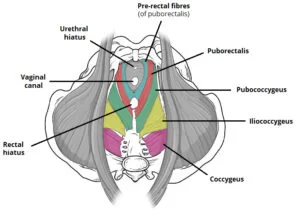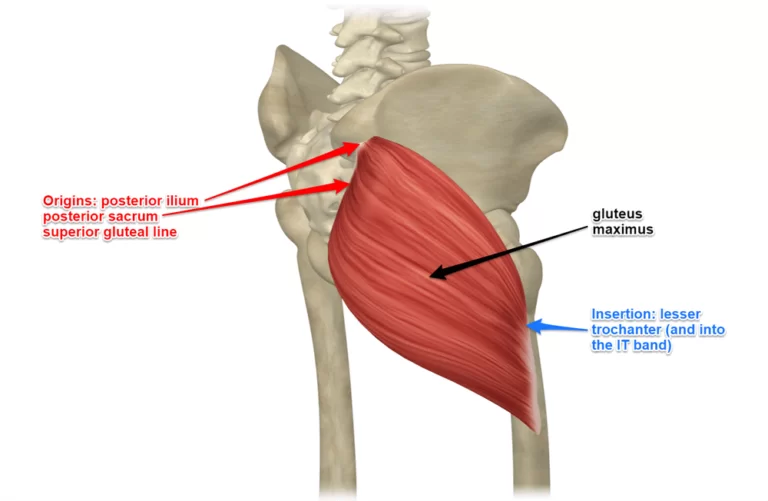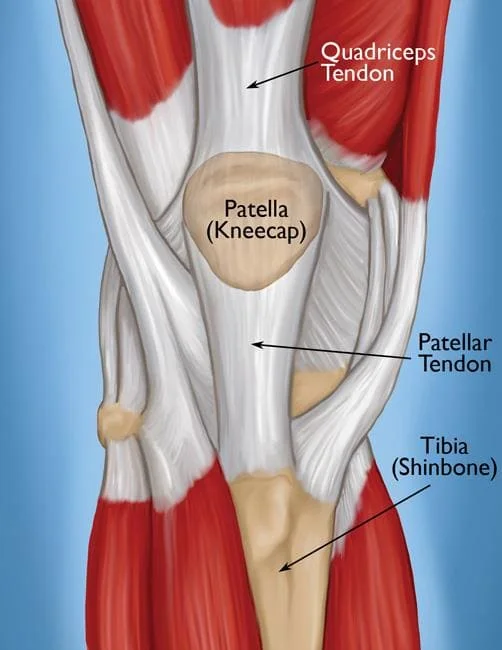Forebrain
Introduction of the forebrain
The forebrain (prosencephalon) is the substantial part of the brain, most of which is the cerebrum. other cardinal structures present in the forebrain comprise the thalamus, the hypothalamus, and the limbic system. The cerebrum is bisected into two cerebral hemispheres connected by a mass of white matter called the corpus callosum.
Each hemisphere is split into four lobes; the frontal lobe, parietal lobe, occipital lobe, and temporal lobe. The surface of each hemisphere is made up of grey matter called the cerebral cortex and is folded to expand the surface area available within the skull. The cortex has functioned within perception, memory, and all higher thought processes. interior of the cortex is the white matter, within which is a numeral of nuclei (grey matter), called as the basal nuclei. The basal nuclei collect information from the cortex to control skeletal movement and other higher motor functions.
The thalamus functions to pass on sensory information to the cerebral cortex and the hypothalamus, controlling visceral functions comprising reproductive function, temperature, sleeping, eating, and the display of emotion. The limbic system describes an assemblage of structures within the forebrain, comprising the amygdala and hippocampus, also called the ’emotional brain’. It is important in the formation of memories and in making learning and decision.
Thalamus
The thalamus has numerous functions including processing and relaying sensory information selectively to various parts of the cerebral cortex, translating signals to the cerebral cortex from lower centers including auditory, somatic, visceral, gustatory, and visual systems and also maintaining states of sleep and alertness. The thalamus gives a major role in regulating inflammation, levels of consciousness, and levels of activity.
Hypothalamus
The role of the hypothalamus is mainly related to the overall control of the Endocrine System. The hypothalamus is closely related to the pituitary gland, controlling a large amount of the activity going to it.
Pituitary
The role of the pituitary gland is mainly related to the manufacturing of hormones as part of the Endocrine System.
Cerebral Cortex
The cerebral cortex is necessary for memory, attention, awareness, thought, language, and consciousness. The outer coating of the cerebrum is made up of grey matter. Grey matter is made up of neurons and their unmyelinated fibers. The white matter below the grey matter of the cortex is formed mostly by the myelinated axons (myelin is white in appearance). The surface of the cerebral cortex is folded in mammals; more than 2/3rd of the surface is within the grooves and “sulci”.
The cerebral cortex is connected to structures similar to the thalamus and the basal ganglia, sending information to them along with the efferent connections and collecting information from them through afferent connections. Most sensory information is the course of the cerebral cortex through the thalamus. The cortex is commonly characterized as comprising three parts; sensory, motor, and association areas.
Sensory Areas
The sensory areas are the areas that collect and process information from the senses. inputs or process from the thalamus is called primary sensory regions. Vision, hearing, and touch are prepared by the primary somatosensory cortex, primary visual cortex, primary auditory cortex and. The two hemispheres of the cerebral cortex collect information from the opposite (contralateral) side of the body. regions with lots of sensory supplies, such as the fingertips and the lips, needs more cortical region to process finer sensation. The association of the brain function to produce a perception of the world authorizes an animal to interact with its environment effectively.
There are a number of anatomical regions of the brain responsible for arranging this sensory information. The parietal lobe is situated within the dorsocaudal aspect of the cortex. The temporal lobes are situated laterally and the occipital lobes are situated in the caudal most aspect of the cortex. The frontal lobe or prefrontal union complex is included in planning actions and movements.
Motor Cortex
The motor cortex regions of the brain are situated in both hemispheres of the cortex and are shaped like a couple of headphones stretching from ear to ear. The motor areas are related to managing voluntary movements, mainly fine movements. There are two major types of connection between the motor cortex and motor neurons established in the ventral horn of the spinal cord; the Pyramidal tracts and the Extrapyramidal tracts.
Pyramidal tract interrelations are direct with no synapses in the brain stem. Axons convey through the ventral aspect of the medulla oblongata. The extrapyramidal tracts convey through the medulla oblongata exterior to the ventral pyramidal tracts and have synapses inside the brain stem nuclei. These synapses make it probable for signals running down the extrapyramidal horns to be determined by other areas of the brain comprising the cerebrum.
The pyramidal tracts are responsible for aspects of fine motor skills that need a degree of conscious thought and concentration. The extrapyramidal tracts are basically responsible for the activation of greater muscle groups and frequently work in a coordinated manner to achieve smooth contemporize movements.
Limbic System
The Limbic system is made up of parts of the brain surrounding the corpus callosum. The Limbic system comprises areas of the cerebral cortex, the cingulate gyrus (dorsally), the parahippocampus gyrus (ventrally), the amygdala, portions of the hypothalamus (mamillary body), and the hippocampus. The Limbic system is mainly responsible for emotions and the different types of emotions can affect the activity of the Autonomic Nervous System (ANS), facilitated by the hypothalamus. For example, anger can cause increased heart rate and blood pressure.
Olfactory Bulb
The olfactory bulb is responsible for olfaction and the bulb itself is situated within the rostral (anterior) forebrain region, supported by the cribriform plate and the ethmoid bone. The olfactory nerves are connected directly to the limbic system which is eccentric among mammalian sensory organs. As a result, olfaction plays a central function and is especially important in regulating/stimulating sexual behavior in many species.
Functions of the forebrain
Forebrain-
- The cerebrum (forebrain) has different regions for carrying out different functions.
- There are related areas in the cerebrum that control thinking or intelligence and memory. These related regions also received information and experiences.
- There are sensory regions where information is collected from the sense organs like eyes, ears, nose, tongue, and skin, and supply us the ‘sensation’ or ‘feeling’.
- The forebrain plays a central function in the processing of information related to complex cognitive activities, sensory and related functions, and voluntary motor activities.
- The cerebral hemispheres are made up of the uppermost part of the brain and are included in sensory integration, control of voluntary movement, and higher intellectual functions, similar to speech and abstract or systemic thought.
- The thalamus is the major convey center between the medulla oblongata and the cerebrum;
- the hypothalamus is a very important control or dominion center for sex drive, body temperature, pleasure, pain, hunger, thirst, blood pressure, and other visceral functions.
- The hypothalamus produces or manufactures hormones that control or supervise the secretions of the anterior pituitary gland, and it also produces or manufactures oxytocin and antidiuretic hormone, which are stored or reserved in and released by the posterior pituitary gland.
FAQ
What is the forebrain of the brain?
The forebrain is the largest portion of the brain that houses the cerebrum, thalamus, hypothalamus, pineal gland, and limbic system.
What is the other name for the forebrain?
The forebrain is also called the prosencephalon.
What is the main function of the forebrain?
The forebrain plays a main role in the processing of instruction related to complex cognitive activities, sensory and relative functions, and voluntary motor activities.
What is the other name of the forebrain?
In the structure of the brain of vertebrates, the forebrain or prosencephalon is the rostral or front (forward-most) portion of the brain. The forebrain (prosencephalon), the midbrain (mesencephalon), and the hindbrain (rhombencephalon) are the three principal brain vesicles during the early development of the nervous system.
What age does the forebrain develop?
The human brain expands from the tip of a 3-millimeter- long neural tube. Three to four weeks later fertilization, the neural groove encloses into a tube, and three distinct areas a hindbrain, midbrain, and forebrain initiate to take form.
What is the main part of the forebrain?
By far the largest area of the brain is the forebrain (obtained from the developmental prosencephalon), which comprises the whole cerebrum and different structures directly settled within it – the thalamus, the hypothalamus, the limbic system, and the pineal gland.
Does the forebrain control memory?
Short-term memory depends most steadily on the prefrontal cortex, yet the whole process is thought to be an active relationship between multiple regions of the brain.
Is the forebrain responsible for memory?
They have maintained that memory is situated in specific portions of the brain and particular neurons can be recognized for their participation in forming memories.
The main portion of the brain that comprises memory are, the hippocampus, the cerebellum, and the prefrontal cortex.
What is forebrain disease?
Clinical Signs of Forebrain Disease. Focal and diffuse forebrain lesions can lead to seizures, abnormal behavior and celebration, compulsive circling, abnormal head and neck postures, central blindness, contralateral hypalgesia, and sometimes, slight facial, tongue, and pharyngeal paresis.
How many types of the forebrain are there?
The forebrain is the great area of the brain. It is split into three major portions, that is the cerebrum, thalamus, and hypothalamus.
How is the forebrain formed?
The forebrain gets arises from the anterior neuroectoderm during gastrulation and by the end of somitogenesis it includes the dorsally positioned telencephalon and eyes, the ventrally positioned hypothalamus, and the more caudally situated diencephalon
Which brain function develops first?
Although the brainstem is the first portion of the brain to mature, the higher region is evolving altogether but at different rates.
What part of the brain controls age?
The hypothalamus
The hypothalamus is critical for controlling the endocrine system—the glands and hormones all around the body. The area is known to play an important role in development or growth, reproduction, and metabolism. It has also recently been compromising in aging.
What happens if the forebrain is damaged?
As a whole, the frontal lobe is responsible for inflated cognitive functions such as emotions, impulse control, memory, problem-solving, social interplay, and motor function. injury to the neurons or tissue of the frontal lobe can cause personality changes, difficulty concentrating or planning or organization, and impulsivity.
How is the forebrain divided?
The forebrain has two subdivisions, diencephalon (interbrain) and telencephalon (endbrain). The hindbrain also has two subdivisions, the myelencephalon (marrow brain) and the metencephalon (after brain).
What is the largest structure of the forebrain?
The Cerebrum
Forebrain. The Cerebrum: Also called the cerebral cortex, the cerebrum is the largest portion of the human brain, and it is associated with elevated brain function similar to thought and action. Nerve cells make up the gray surface, which is a bit thicker than the thumb.






